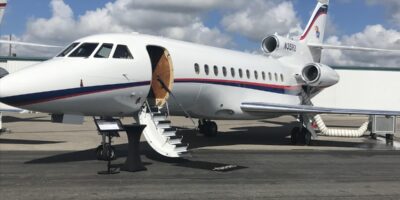Airline Fleet Management
Airline Fleet Management
Managing an airline’s fleet is a complex but fascinating task. It involves a mix of strategic planning, financial analysis, and operational know-how. The fleet is the backbone of an airline, determining much of its capacity and capabilities.
Fleet Composition
Airlines must decide on the types of aircraft to include in their fleets. This decision is influenced by route structures, passenger demand, and operational costs. Airlines typically have a mix of narrow-body jets for short-haul flights and wide-body aircraft for long-haul routes.
Narrow-body jets like the Boeing 737 and Airbus A320 are common in domestic and regional markets. They are efficient and flexible, capable of serving airports with varied infrastructural capabilities. Wide-body aircraft such as the Boeing 777 and Airbus A350 are used for international routes. They are designed for comfort on long flights and can carry more passengers and cargo over greater distances.
Age and Maintenance
The age of an aircraft affects its efficiency and maintenance requirements. Older aircraft tend to be less fuel-efficient and more costly to maintain. However, they can still be valuable if they are well-maintained and meet operational needs.
Routine maintenance includes regular inspections, part replacements, and system updates. Airlines follow a maintenance schedule based on flight hours and cycles. Larger checks, such as C and D checks, involve significant downtime and detailed inspections. Effective maintenance can extend an aircraft’s service life and ensure safety.
Fuel Efficiency
Fuel is one of the largest operating expenses for airlines. Advances in engine technology and aerodynamics have led to more fuel-efficient aircraft. Fleet management involves selecting aircraft that balance fuel consumption with operational needs.
Modern aircraft like the Boeing 787 and Airbus A320neo series are designed with fuel efficiency in mind. They use advanced materials and efficient engines to reduce fuel consumption. Airlines also consider retrofitting older aircraft with new technology to improve fuel efficiency.
Fleet Size and Utilization
Determining the right fleet size is a critical decision for airlines. It involves forecasting demand, analyzing route performance, and assessing financial risks. Too large a fleet can lead to wasted resources, while a fleet that’s too small can limit growth and profitability.
Utilization rates measure how effectively an airline uses its fleet. Higher utilization means aircraft spend more time flying, generating revenue. Airlines aim to optimize flight schedules and minimize downtime to enhance utilization. Strategic planning can balance peak and off-peak demands, adjusting fleet size accordingly.
Leasing vs. Purchasing
Airlines can either lease or purchase aircraft. Each option has benefits and drawbacks. Leasing offers flexibility, allowing airlines to adjust their fleet size without large capital expenditures. Operating leases can be short-term, aiding quick adjustments to market changes.
Purchasing aircraft requires significant investment but offers long-term financial advantages. Owned aircraft can be collateral for loans and lines of credit. Airlines often use a mix of leased and owned aircraft to balance flexibility and asset value.
Technological Upgrades
Technological advancements continue to shape fleet management. Upgrades can include new avionics systems, improved cabin amenities, and enhanced safety features. Keeping up with technology can improve passenger experience and operational efficiency.
Investing in newer aircraft models also brings benefits. They often come pre-equipped with the latest technology. Airlines must decide the timing of fleet renewal to align with technological developments and financial capability.
Environmental Impact
The aviation industry faces increasing pressure to reduce environmental impact. Airlines focus on sustainability initiatives, including fleet management practices that minimize emissions. Modern, fuel-efficient aircraft produce fewer pollutants per passenger kilometer.
Airlines also explore alternative fuels and carbon offset programs. Innovations in electric and hybrid propulsion systems are in development, though widespread implementation remains years away. Fleet planning today is increasingly considering the long-term sustainability of operations.
Fleet Standardization
Standardizing the fleet can simplify maintenance, training, and operations. Operating a limited variety of aircraft types allows airlines to streamline processes. It reduces the number of spare parts needed and simplifies pilot training programs.
However, a highly standardized fleet may lack flexibility. Different aircraft types can serve varied market needs better. Airlines must find a balance, often opting for families of aircraft that offer a range of capacities and capabilities within similar frameworks.
Seasonal Adjustments
Air travel demand fluctuates with seasons. Airlines adjust fleet deployment accordingly. During peak travel seasons, more aircraft are deployed to meet higher demand. Conversely, some aircraft may enter short-term storage during off-peak periods.
Seasonal adjustments also involve route planning changes. Airlines may introduce seasonal routes to popular vacation destinations. Effective scheduling ensures optimal fleet use and maintains profitability throughout the year.
Economics of Fleet Decisions
Fleet management decisions impact an airline’s financial health. Aircraft acquisition, maintenance, and operation costs affect profitability. Strategic decisions include timing of purchases, aircraft financing, and balancing fleet utilization with passenger demand.
Airlines conduct detailed financial analysis, assessing net present value and return on investment for each fleet decision. The goal is to maximize long-term profitability while managing financial risks. Economic considerations are crucial in maintaining competitive advantages.
Impact of Market Trends
Market trends influence fleet management strategies. Changes in passenger preferences, economic conditions, and geopolitical events drive demand shifts. Airlines must respond to these trends to remain competitive.
For example, the rise in low-cost carriers has impacted fleet choices. These airlines prioritize cost-efficient, high-utilization models like the Airbus A320 or Boeing 737. Traditional carriers might focus on premium services and long-haul routes, selecting aircraft that meet these market needs.
COVID-19 and Fleet Adjustments
The COVID-19 pandemic profoundly impacted airline fleets. Many airlines grounded a significant portion of their fleets as demand plummeted. This period saw accelerated retirements of older, less efficient aircraft. Airlines reevaluated fleet composition to adapt to reduced travel demand.
Recovery phases involve strategizing for a return to pre-pandemic levels. Airlines are cautious, balancing costs with the need to remain agile in an uncertain market. The pandemic underscored the importance of flexibility and resilience in fleet management.
Integration of New Aircraft
Introducing new aircraft into the fleet involves careful planning. It requires pilot training, maintenance adjustments, and operational changes. Airlines schedule phased deployments to integrate new aircraft smoothly.
Manufacturers often assist with the integration process. They provide training programs and support services. This collaboration helps ensure that new aircraft enter service without operational disruptions.
Role of Data Analytics
Data analytics play a vital role in fleet management. Airlines collect and analyze data on aircraft performance, maintenance needs, and operational efficiency. Advanced analytics tools help optimize fleet utilization and predict maintenance requirements.
Predictive maintenance uses data to foresee potential issues before they become serious. This approach reduces downtime and maintenance costs. Data-driven decision-making enhances overall fleet reliability and efficiency.
Future Fleet Trends
The future of fleet management includes trends toward greater sustainability and technological innovation. Electric and hybrid aircraft development is progressing, promising reduced emissions. Autonomous flight systems and advanced materials will shape next-generation aircraft.
Airlines will continue balancing cost management with innovation. Fleets will likely become even more diverse to meet varying market demands. Ongoing technological advances will drive further evolution in fleet management practices.
Conclusion
In summary, airline fleet management is a dynamic and multifaceted domain. It involves strategic decision-making to optimize fleet composition, utilization, and financial health. Technological advancements and market trends continually shape the landscape. Effective fleet management is crucial for maintaining an airline’s operational efficiency and competitive edge.




Subscribe for Updates
Get the latest articles delivered to your inbox.
We respect your privacy. Unsubscribe anytime.